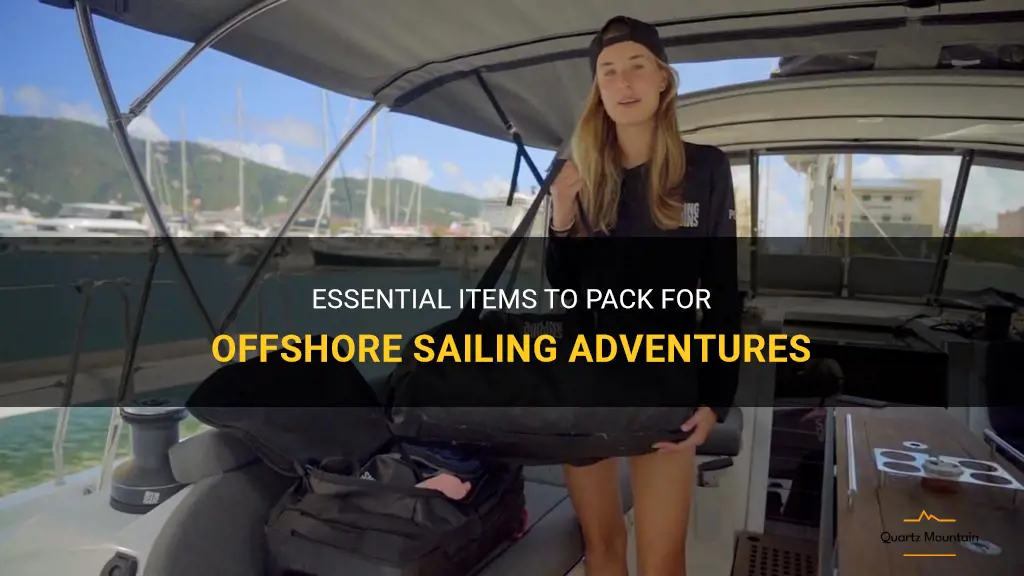
Offshore sailing adventures offer a thrilling escape from reality, taking adventurers to explore the vast expanses of the open water. But before setting sail into the unknown, it's crucial to pack the right essentials to ensure a safe and unforgettable experience. From navigation tools to safety equipment, this comprehensive guide will walk you through the must-have items to pack for your offshore sailing adventure. So whether you're embarking on a solo journey or setting sail with a crew, you'll be well-prepared for whatever the open water has in store.
What You'll Learn
- What are the essential items that need to be packed for offshore sailing?
- How should I pack my clothing for offshore sailing to maximize space and keep it dry?
- What safety equipment is necessary to pack for offshore sailing?
- Are there any specific tools or repair equipment that should be brought on an offshore sailing trip?
- Are there any food or cooking items that are recommended to pack for offshore sailing?

What are the essential items that need to be packed for offshore sailing?
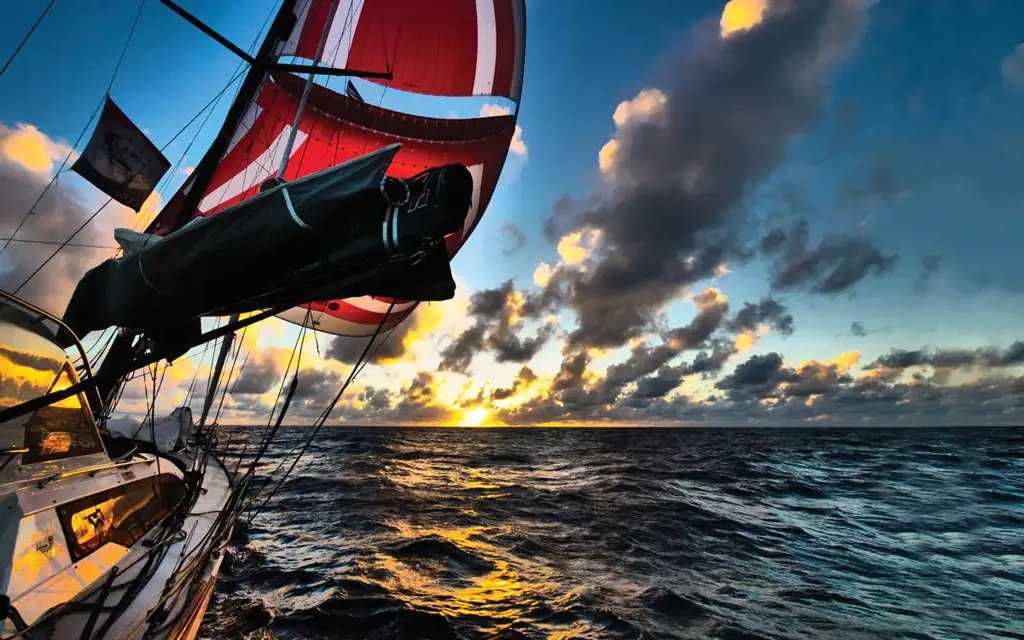
Offshore sailing can be an exhilarating and challenging experience. Whether you are embarking on a long-distance voyage or planning a weekend adventure, there are essential items that you should pack to ensure your safety and comfort while out at sea. In this article, we will outline the must-have items for offshore sailing, taking into account both the scientific and experiential knowledge of seasoned sailors.
Safety Equipment:
Safety should be your top priority when heading offshore. Essential safety equipment includes a life jacket or personal flotation device (PFD) for each crew member onboard. These should be properly fitted and in good condition. Additionally, you should have a throwable flotation device, such as a life ring or buoy, easily accessible in case of a man overboard situation. A personal locator beacon (PLB) or emergency position-indicating radio beacon (EPIRB) is crucial for alerting rescue authorities in case of emergency.
Navigation Tools:
Accurate navigation is vital for offshore sailing. Essential navigation tools include a GPS unit, marine charts or electronic charts, compass, and binoculars. It is also recommended to have a backup navigation system, such as paper charts and a handheld compass, in case of a GPS failure.
Communication Devices:
Staying connected while offshore is important for both safety and convenience. A VHF marine radio is essential for communicating with other vessels and emergency services. It is also advisable to have a backup communication device, such as a satellite phone or handheld VHF radio, as cell phone reception may be limited or unavailable offshore.
Anchoring and Mooring Equipment:
Having the necessary equipment for anchoring and mooring is essential when stopping at anchorages or marinas. This includes a reliable anchor with sufficient chain or rode, fenders for protecting your boat when docking, and mooring lines for securing your vessel safely.
Essential Tools:
Being prepared with a toolkit can save you from many unforeseen situations while offshore. Some essential tools to have on board include a multi-tool, spare parts for your boat's systems, duct tape, spare batteries, and a flashlight. It is also a good idea to have a basic first aid kit and a manual on boat maintenance and repairs.
Food and Water:
Proper nutrition and hydration are crucial for maintaining energy and stamina while offshore. Pack non-perishable food items that are easy to prepare and require minimal cooking. Canned goods, dried fruits, nuts, and energy bars are ideal choices. It is also important to carry an ample supply of drinking water, as well as a water filtration system or water purifying tablets for emergencies.
Clothing and Personal Items:
Pack appropriate clothing for the expected weather conditions, including waterproof gear, warm layers, and sun protection. Don't forget essential personal items such as medications, toiletries, sunscreen, and insect repellent. It is also advisable to pack extra clothing to account for unexpected weather changes or emergencies.
Safety Harness and Tether:
When sailing offshore, it is necessary to have a safety harness and tether for each crew member. These devices are designed to prevent falls overboard and should be worn whenever conditions are deemed hazardous or when sailing at night.
Entertainment and Comfort Items:
While safety should be the primary concern, it is important to have some form of entertainment or comfort items to make the offshore journey more enjoyable. This could include books, playing cards, music, or a handheld game console. Additionally, consider packing bedding and cushions to maximize comfort during long passages.
In conclusion, packing the essential items for offshore sailing involves careful consideration of safety, navigation, communication, and personal comfort. By adhering to these guidelines and consulting experienced sailors, you can ensure a safe and enjoyable offshore sailing experience. Remember to prioritize safety at all times and always be prepared for unexpected situations.
Essential Gear to Pack for Hiking in Colorado
You may want to see also

How should I pack my clothing for offshore sailing to maximize space and keep it dry?
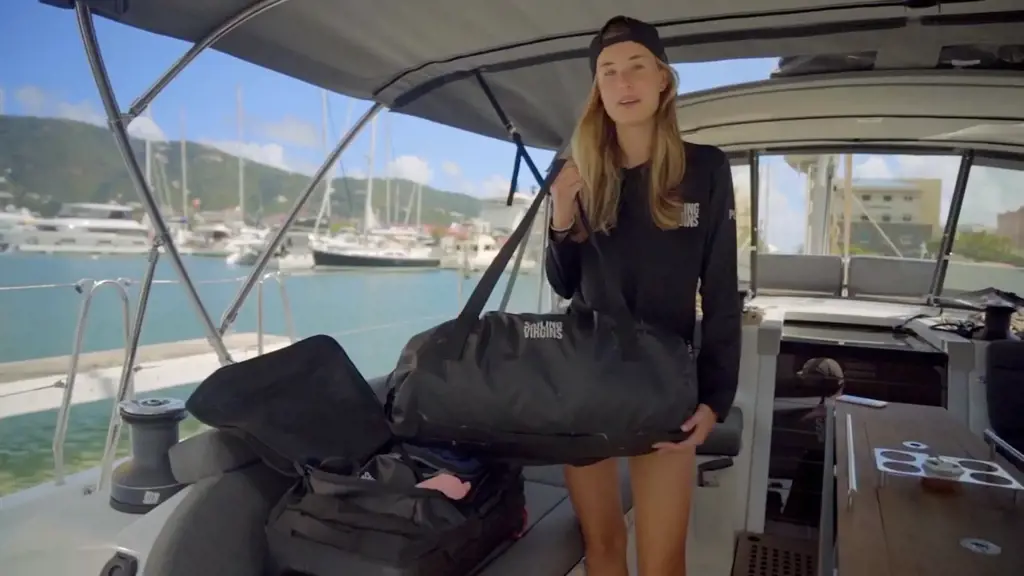
Offshore sailing can be a thrilling adventure, but it also requires careful planning and preparation, especially when it comes to packing your clothing. Space is often limited on a boat, so it's important to maximize every inch and keep your clothing dry. Here are some tips on how to pack your clothing for offshore sailing.
- Choose the right clothing: When packing for offshore sailing, it's important to choose clothing that is suitable for the conditions you will be facing. Look for lightweight, quick-drying materials that can withstand the elements. Opt for layers rather than bulky items, as this will allow you to adjust your clothing to the temperature and weather conditions.
- Roll, don't fold: Rolling your clothing instead of folding it can save a significant amount of space in your bag. This method also helps to reduce wrinkles and makes it easier to find specific items when you need them. Start by laying the item flat, then roll it tightly from one end to the other. Secure the roll with a rubber band or a small clip.
- Use compression bags: Compression bags are a great way to maximize space in your backpack or duffel bag. These bags have a one-way valve that allows you to remove excess air, reducing the volume of the items inside. Simply place your clothing in the bag, seal it, and then roll it to remove the air. This will not only save space but also help keep your clothing dry.
- Separate dry and wet items: It's important to keep your dry clothes separate from your wet clothes to avoid any moisture spreading and causing mold or mildew. Pack your dry clothing in waterproof bags or dry bags to ensure they stay dry even if water enters the boat. Keep a separate bag or compartment for wet clothing, and make sure to wring out any excess water before storing them.
- Utilize packing cubes: Packing cubes are another excellent tool for organizing and maximizing space. These lightweight fabric containers help to compartmentalize your clothing and keep it neat and tidy. You can sort your clothing by type or outfit and easily find what you need without rummaging through your whole bag.
- Vacuum seal if possible: If you have access to a vacuum sealer, consider vacuum sealing your clothing before packing. This method can save a tremendous amount of space, but it may not be suitable for all types of clothing, as it can cause wrinkles or damage delicate fabrics. Vacuum sealing is especially useful for items like towels or blankets, which can take up a lot of space.
- Pack smartly: Finally, be strategic about how you pack your bag. Place heavy items at the bottom to provide a stable base, and fill any gaps with smaller items or accessories. Keep frequently used items within easy reach, so you don't have to unpack everything to find what you need.
By following these tips, you can make the most of the limited space available on a boat and ensure that your clothing stays dry throughout your offshore sailing adventure. Remember to pack only the essentials and prioritize functionality over fashion. Safe travels!
Essential Items for a Tasty Lunch at the Zoo
You may want to see also

What safety equipment is necessary to pack for offshore sailing?
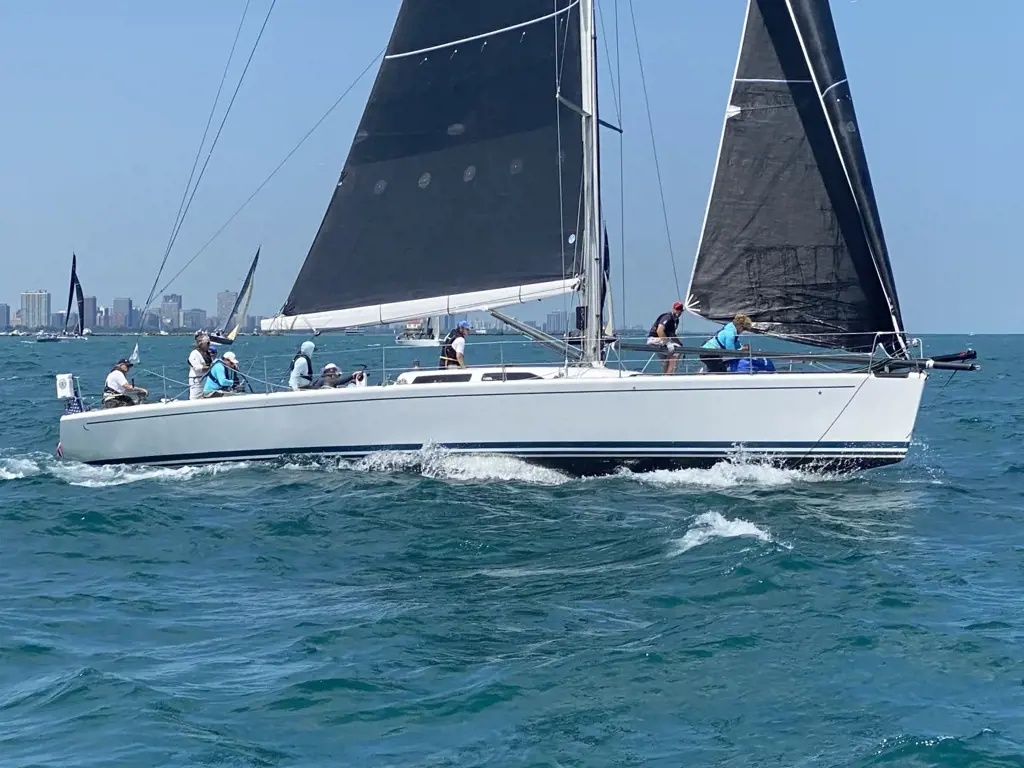
Offshore sailing can be an exhilarating and challenging experience. Whether you are planning a short voyage or a long expedition, it is crucial to ensure the safety of yourself and your crew. In order to do so, it is necessary to pack the right safety equipment for offshore sailing. This article will provide a comprehensive list of essential safety gear that should be included in your packing checklist.
- Life Jackets: Life jackets are a must-have safety item for any sailing trip. Each member of your crew should have a properly fitted life jacket that is approved by a recognized authority. In the event of an emergency, life jackets will ensure that everyone stays afloat and buys valuable time for rescue operations.
- EPIRB: An Emergency Position Indicating Radio Beacon (EPIRB) is a crucial piece of safety equipment for offshore sailing. EPIRBs alert search and rescue services in the event of an emergency by transmitting a distress signal with your location. Make sure to register your EPIRB before setting off and keep it within reach at all times.
- Fire Extinguishers: Fires can be devastating on a boat, especially in the middle of the ocean. It is vital to have at least two working fire extinguishers on board. Make sure they are easily accessible and regularly checked to ensure they are in good working condition.
- First Aid Kit: Accidents can happen anywhere, including on a boat. A well-stocked first aid kit is essential for offshore sailing. Include essential items such as bandages, antiseptics, painkillers, and any medication required by your crew members.
- VHF Radio: A VHF radio is your primary communication device on the water. It allows you to communicate with nearby vessels, the coast guard, and other emergency services. Make sure you are familiar with its operation and keep it in a waterproof case to protect it from the elements.
- Flares: Flares are an effective way to signal distress in an emergency. Pack both handheld flares and parachute flares to cover different scenarios. Ensure they are in date and disposed of responsibly according to local regulations.
- Life Raft: In the event of abandoning your vessel, a life raft can be a lifesaver. Make sure your life raft is properly serviced and equipped with essential supplies such as fresh water, food rations, and signaling devices.
- Safety Harnesses and Tethers: Safety harnesses and tethers are critical for keeping crew members secure on deck in rough conditions. Make sure each crew member has their own harness and tether and knows how to use them properly.
- Navigation Equipment: Reliable navigation equipment is crucial for offshore sailing. This includes GPS, charts, compasses, and binoculars. Make sure to have backup navigation tools in case of equipment failure.
- Storm Sails: Sudden changes in weather can be unpredictable at sea. It is important to have storm sails on board to manage heavy winds and rough seas. Make sure your crew is trained in handling these sails.
- Bilge Pump: A bilge pump is essential for removing water from the boat in case of leaks or flooding. Ensure it is in good working condition and easily accessible.
- Safety Knife: A safety knife is a valuable tool for cutting through ropes and lines in emergency situations. Make sure each crew member has access to a safety knife that is easily reachable.
Remember, this is not an exhaustive list, and additional safety equipment may be required depending on the specifics of your voyage. Always conduct a thorough safety inspection and ensure that all crew members are familiar with the location and operation of safety equipment before setting sail. By packing the necessary safety gear, you can ensure a safer and more enjoyable offshore sailing experience.
Essential Items to Pack for a Memorable Trip to Napa Valley
You may want to see also

Are there any specific tools or repair equipment that should be brought on an offshore sailing trip?
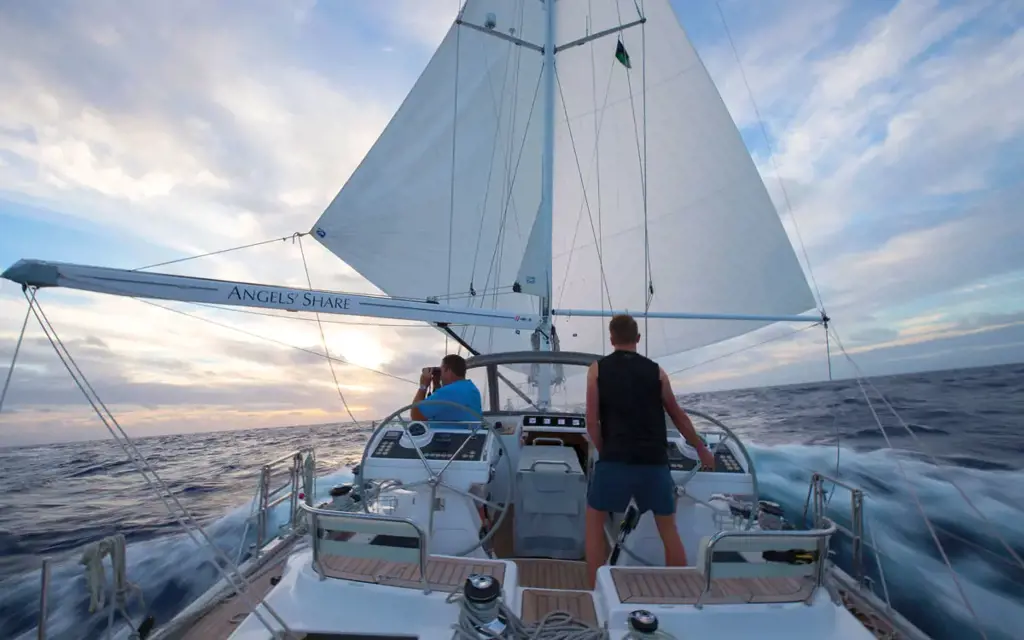
When setting off on an offshore sailing trip, it is crucial to be prepared for potential repairs and emergencies while out at sea. Having the right tools and repair equipment on board can make a significant difference in keeping your journey safe and smooth. Here are some essential items that should be brought on an offshore sailing trip.
- Multi-purpose Tool: A multi-tool, such as a Swiss Army knife, is invaluable in various situations. It typically includes pliers, screwdrivers, blades, and other useful tools that can come in handy for minor repairs or adjustments.
- Spare Parts: It is wise to carry a selection of spare parts that are most prone to wear and tear on a boat. These can include spare fuses, light bulbs, impellers, engine belts, hose clamps, and other critical components specific to your boat's make and model. Make sure to check with your boat's manufacturer or consult a marine mechanic to determine the specific spare parts you should carry.
- Electrical Repair Kit: Electrical issues can be a common occurrence on a sailboat. Therefore, having an electrical repair kit is a must. This kit should include wire cutters, wire strippers, electrical tape, connectors, and spare wiring. Additionally, a voltage tester and a basic multimeter are essential for diagnosing and troubleshooting electrical problems.
- Plumbing Repair Supplies: Plumbing failures are another common issue on boats, especially when out at sea for extended periods. Carrying supplies like pipe clamps, Teflon tape, PVC fittings, hose connectors, and a hose cutter can help in fixing plumbing leaks or damaged hoses.
- Sail Repair Kit: In the event of torn or damaged sails, having a sail repair kit is vital to continue sailing safely. The kit should include sail repair tape, sail needles, waxed thread, and a palm or thimble for sewing. It is also advisable to have spare shackles, blocks, and lines to replace any damaged hardware.
- Marine Adhesives and Sealants: An assortment of marine-grade adhesives and sealants should be kept onboard for various applications. These include epoxy, marine sealant, silicone adhesive, and adhesive tape. These products can be used for emergency hull repairs, fixing leaks, or securing loose fittings.
- Safety Gear: While not directly related to repairs, safety gear is essential on any sailing trip. This includes life jackets, safety harnesses, a first aid kit, flare guns, a fire extinguisher, and emergency signaling devices. These items can be lifesaving in case of emergencies or accidents.
- Documentation and Manuals: In addition to physical tools and repair equipment, it is also important to have relevant documentation and manuals on board. This includes user manuals for various onboard systems, such as the engine, electrical system, and plumbing system. Having these resources readily available can help troubleshoot issues and perform repairs more effectively.
It is important to note that having the necessary tools and equipment is only part of being prepared for offshore sailing. It is equally important to have the knowledge and skills to use them effectively. Consider taking sailing and maintenance courses or consulting with experienced sailors to gain the necessary expertise to handle repairs at sea.
In conclusion, preparing for an offshore sailing trip involves ensuring you have the right tools and repair equipment on board. A multi-tool, spare parts, electrical repair kit, plumbing repair supplies, sail repair kit, marine adhesives and sealants, safety gear, and documentation are all essential items to bring. Remember, always prioritize safety and consult with professionals if unsure about how to use any equipment or perform repairs.
The Ultimate Weekend Packing Guide for a Getaway in Adelaide
You may want to see also

Are there any food or cooking items that are recommended to pack for offshore sailing?
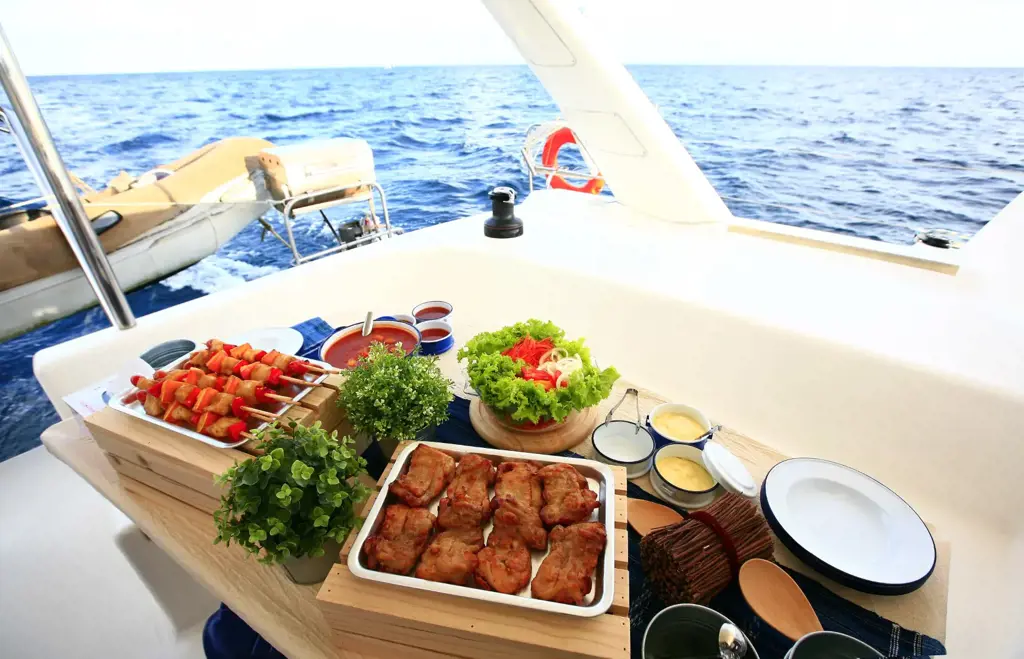
When preparing for an offshore sailing trip, it's important to pack enough food and cooking items to sustain yourself and your crew for the duration of the journey. However, space and storage limitations on board mean that you need to carefully consider which food and cooking items are essential. Here are some recommendations for what to pack:
- Non-perishable food: Stock up on non-perishable food items that have a long shelf life. Examples include canned goods such as tuna, beans, and vegetables, as well as pasta, rice, and dried fruits and nuts. These will provide you with essential nutrients and energy throughout the trip.
- Vacuum-sealed meals: Vacuum-sealed meals are a great option for offshore sailing as they are easy to store and cook. These pre-packaged meals contain a variety of ingredients and can be heated by boiling them in water or using a portable stove. Look for vacuum-sealed meals that are specifically designed for boating or camping trips, as they are often more compact and lightweight.
- Freeze-dried meals: Another option for offshore sailing is freeze-dried meals. These meals have had the water removed, making them incredibly lightweight and easy to store. Simply add water and heat them up, and you'll have a hot and satisfying meal. Freeze-dried meals come in a variety of flavors and can be a great option for those who want a wider range of meal options.
- Spices and condiments: While basic meals can be sustained with non-perishable food items, adding spices and condiments can greatly enhance the flavor of your meals. Consider packing small containers of salt, pepper, garlic powder, dried herbs, and your favorite hot sauces. These small additions can make a big difference in taste and help to combat the monotony of eating canned and packaged foods.
- Cooking equipment: In addition to food, you'll need some basic cooking equipment to prepare your meals. A portable stove or grill is essential, as it allows you to heat up your meals and boil water for cooking. Make sure to pack enough fuel for your stove to last for the duration of your trip. You may also want to bring a small pot or pan for cooking, as well as utensils such as a spatula, knife, and can opener.
- Fresh produce: While it's challenging to keep fresh produce on board for an extended period of time, it's still recommended to pack some fruits and vegetables that can last longer, such as apples, oranges, carrots, and potatoes. These fresh items can provide important vitamins and nutrients, and can help to break up the monotony of packaged meals.
- Snacks and treats: Don't forget to pack some snacks and treats to enjoy during your offshore sailing trip. Granola bars, trail mix, chocolate, and other non-perishable snacks can provide a much-needed boost of energy and morale. It's also a good idea to pack some comfort foods or treats that you enjoy, as they can help to lift spirits during long stretches at sea.
Remember to carefully consider the storage and space limitations on board before packing food and cooking items for your offshore sailing trip. Opt for lightweight and compact options, and focus on non-perishable foods and meals that can be easily prepared on board. By planning ahead and packing the right items, you'll ensure that you have enough sustenance to make your offshore sailing adventure a success.
What Essentials Do You Need to Pack for a Memorable Sleepover?
You may want to see also
Frequently asked questions
When it comes to clothing for offshore sailing, it's important to prioritize comfort, protection, and layering. You should pack a mixture of thermal base layers, fleece or synthetic mid-layers, waterproof outer layers, and plenty of socks and underwear. Additionally, bring a warm hat, sunglasses, waterproof gloves, and non-slip footwear to complete your sailing wardrobe.
It's best to bring a few different pairs of shoes for offshore sailing. You'll want a pair of non-slip, waterproof sailing boots or deck shoes for on-deck activities. These shoes should have good grip and provide protection against water and slipping. It's also a good idea to pack a more comfortable pair of shoes, such as trainers or lightweight sneakers, for below-deck activities or exploring onshore during stops.
Apart from the necessary clothing and footwear, there are a few personal items that are essential for offshore sailing. These include a good quality sunscreen with a high SPF, a hat for sun protection, a personal first aid kit with any necessary medications, toiletries (including wet wipes and hand sanitizer), a headlamp or flashlight, and a waterproof bag to keep your personal belongings dry.
Safety should always be a top priority when packing for offshore sailing. Some essential safety equipment to pack includes a life jacket or personal flotation device (PFD), a safety harness with a tether for staying secured on deck, an EPIRB (Emergency Position Indicating Radio Beacon), a handheld VHF radio, a whistle or signaling device, a knife or multi-tool, and a first aid kit with essential medical supplies. It's also important to familiarize yourself with the boat's safety equipment and procedures before setting sail.







